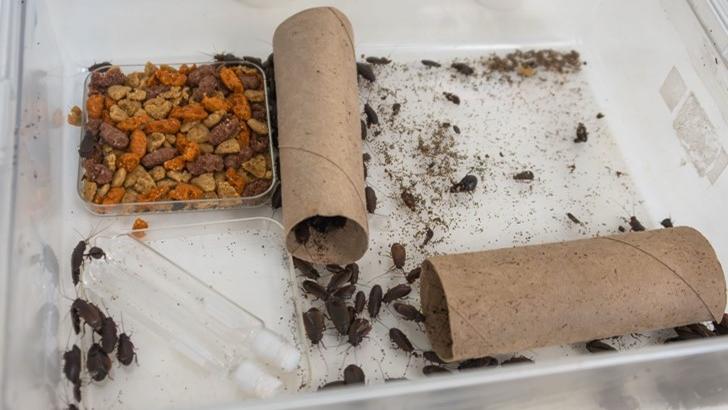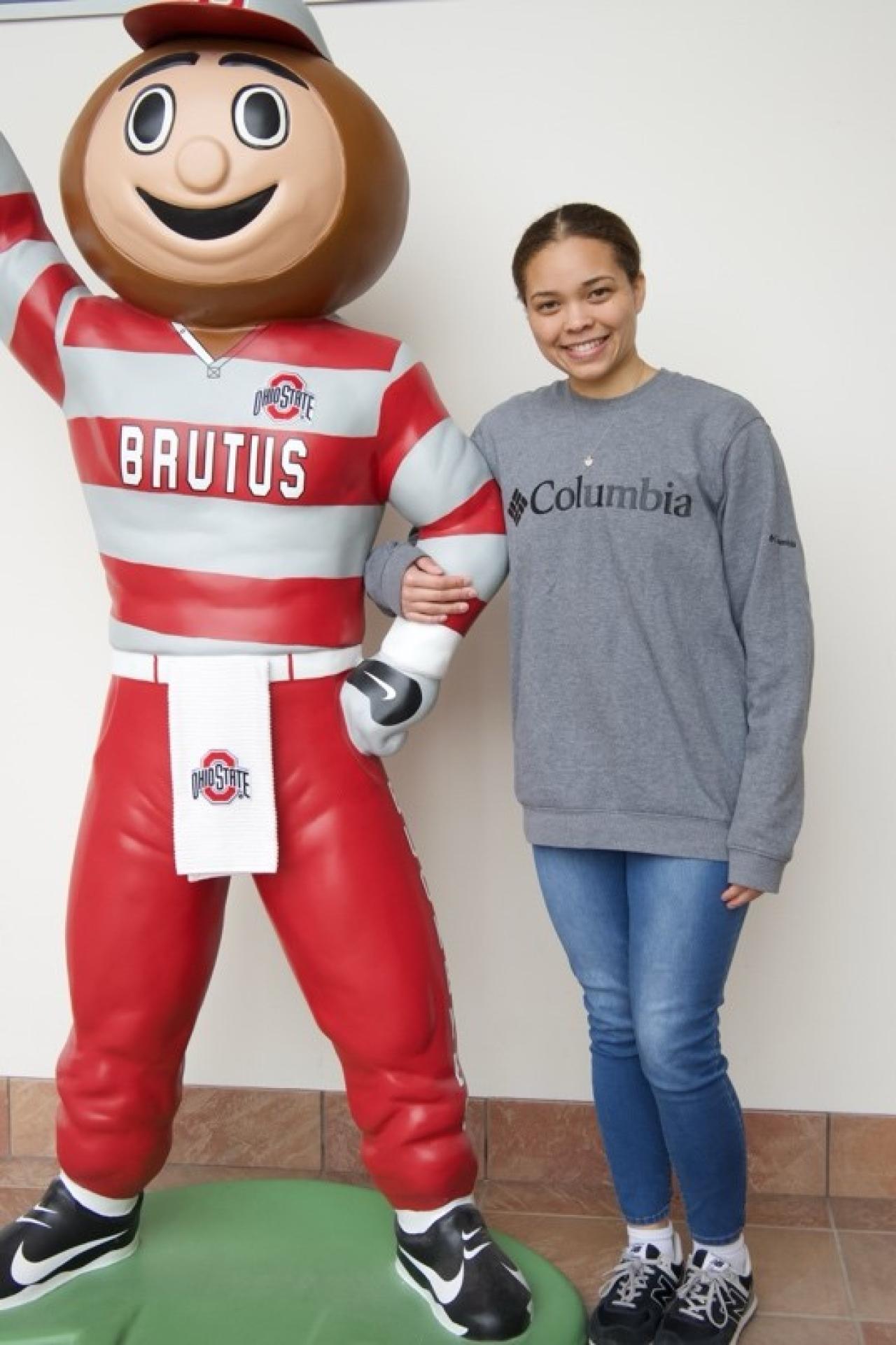“They are basically like mammals,” he said. “The females mate and then they produce embryos contained inside a brood sac. The brood sac secretes a product that is very similar to the milk of mammals. The embryos consume the milk and about two months later, the females give birth to 10-12 nymphs, or baby cockroaches.”
Muñoz-Garcia has been a professor with Ohio State for 12 years, and is currently an associate professor of evolution, ecology and organismal biology at Ohio State Mansfield. He is interested in how organisms function as a response to environmental changes – things like temperature, humidity, resource availability and more.
Going with Cockroaches
He first wanted to study mice, but the high cost and the challenge of keeping them in captivity caused him to reconsider. Then one day, at a research conference in Oxford, Ohio, where he met a professor and past graduate student classmate who was studying cockroaches.
That professor, Josh Benoit, of the University of Cincinnati, set him up with 100 cockroaches. Today, Muñoz-Garcia has between 1,000-2,000 roaches, and is in the midst of new research to document how insects and other living organisms allocate resources.
In the fall of 2024, Muñoz-Garcia moved his lab from Ohio State Columbus, to Ohio State Mansfield. Today, his research involves undergraduate students, as well as co-researchers Josh Benoit, and Paul Ayayee, a biology professor with the University of Nebraska.
Resource Allocation
The team is working together to document how the roaches allocate resources, and the factors that control or determine this allocation.
So far, his research points toward a group of proteins, called sirtuins, as being the deciding factor into how resources are allocated.
“Resource allocation is not something that magically occurs or that we necessarily have conscious control over,” he said. “We identified this group of proteins, called sirtuins. It seems that these proteins control metabolic processes in the cells. They can activate or deactivate cells.”

